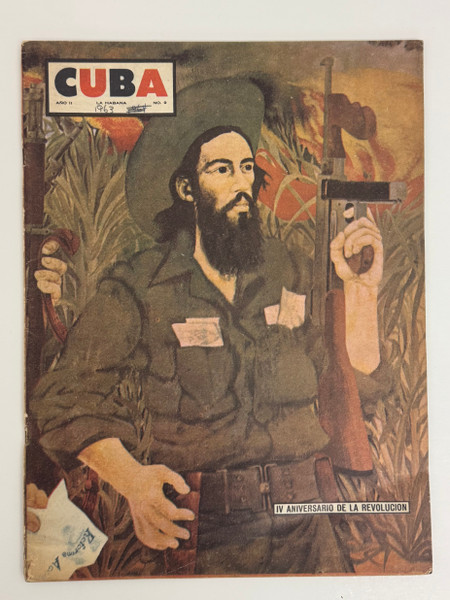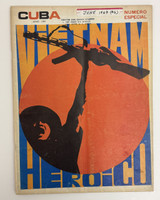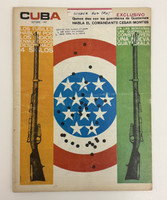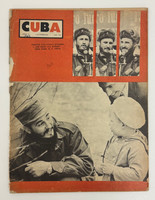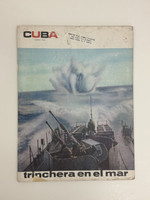- Travel
-
Exhibits
- La Portada Cubana
- Immortal Cuba: Artists Take on Their Heroes
- Seattle Poster Exhibit
- Sandra Dooley & Alejandrina Cué
- The Art of Wayacón
- Cuban Folk Art
- Cuba In Black And White
- 25 Years of Cuban Art Space
- Summer Folk Art Expo
- ¡SPRING AWAKENING FROM CUBA!
- Celebrating The Art Of Cuban Women
- Celebrating Paper, Affordable Art from Cuba
- Art of the Revolution
- Outsider Art
- Lost and Found
- En la lucha: Celebrating Cuban Women and Their Art
- Cuban Art Stash
- 100 Fires: 5 Cienfuegos Artists' Work on Paper
- Waya + Monte! Magic Realism in Cienfuegos
- Viva Cuba Viva! Poster Show
- Cultivando Sueños
- Black Lives Matter in Cuba Jan 9-March 27
- Leandro Soto: Crónicas visuales
- Cuban Canvas
-
Archive
- Global Reflection 2018: Spirit and Community
- Exhibit in the cloud: Contemporary Works on Paper
- MADE IN CUBA! MINNEAPOLIS EXHIBIT
- Cuban Posters and Photography from CCS collection
- AUTUMN SALE! Sept/Oct 2017
- SPRING ARTS AND CRAFT SALE
- Vuelo Directo/Non Stop: Alberto & Alejandro Lescay
- The Many Faces of Fidel
- Somos
- Made in Cuba!
- The US empire in Cuban graphics
- Made in Cuba/Seattle exhibit
- Entre Nos
- Looking Back
- Cuban Art Space
- Membership/Donate
- About Us
- Cuba News
-
This commemorative issue of Cuba magazine celebrates the fourth anniversary of the Cuban Revolution through a powerful cover photograph by Carlos Núñez documenting Italian muralist José Venturelli's heroic portrait of Camilo Cienfuegos. The cover captures the central figure from Venturelli's mural, depicting the legendary comandante in olive-green fatigues and military cap, wielding both machete and pistol while surrounded by lush tropical vegetation—visual symbols that would become central to Cuban revolutionary iconography.
Camilo Cienfuegos (1932-1959) was one of the most beloved figures of the Cuban Revolution, known for his charisma, bravery, and close friendship with Fidel Castro and Che Guevara. He played a crucial role in the revolutionary victory, commanding rebel forces and earning the title "Hero of Yaguajay." His mysterious disappearance in a plane crash on October 28, 1959—just ten months after the revolution's triumph—transformed him into a martyr and icon of revolutionary sacrifice. By 1963, when this magazine was published, Cienfuegos had already achieved mythic status in Cuban revolutionary culture.
The magazine features an extensive analysis by Juan Marinello examining Venturelli's mural across pages 38-49. Marinello, a prominent Cuban intellectual, poet, and politician who served as rector of the University of Havana, brings scholarly weight to this exploration of how revolutionary art translates military victory into enduring visual symbols. Venturelli's mural, with Cienfuegos as its central figure, represents the effort to create a revolutionary aesthetic that combines socialist realist heroism with tropical Cuban imagery.
Cuba magazine served as an important vehicle for projecting revolutionary Cuba's image both domestically and internationally during the early 1960s. Under director Antonio Núñez Jiménez (a geographer, revolutionary, and close associate of Fidel Castro), the magazine combined stunning full-color photography with political content. This issue features iconic imagery contrasting the armed struggle with peaceful scenes of fishermen at Cojímar, royal palms along the Pinar del Río coastline, and daily life in revolutionary Cuba—demonstrating the transformation from war to socialist reconstruction.
-
-
Discover More at the Center for Cuban Studies

